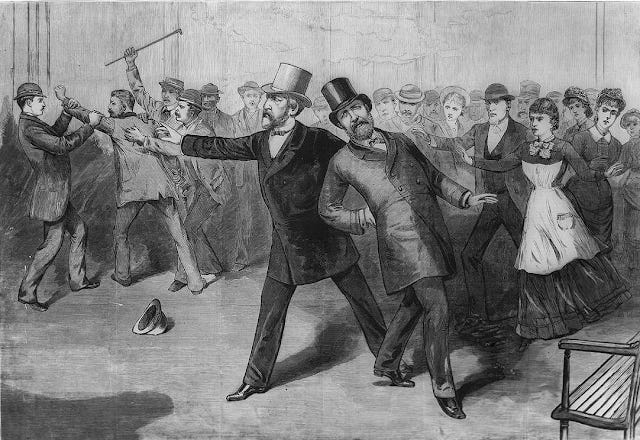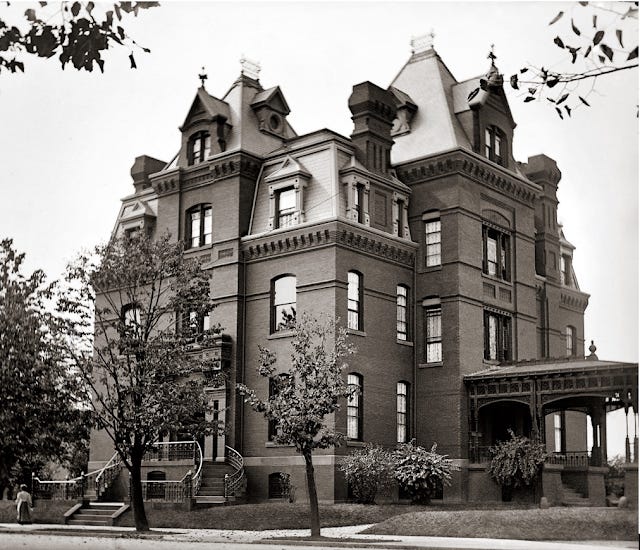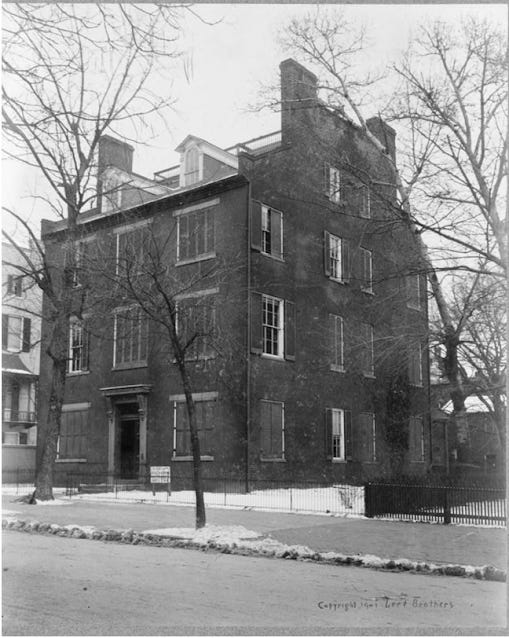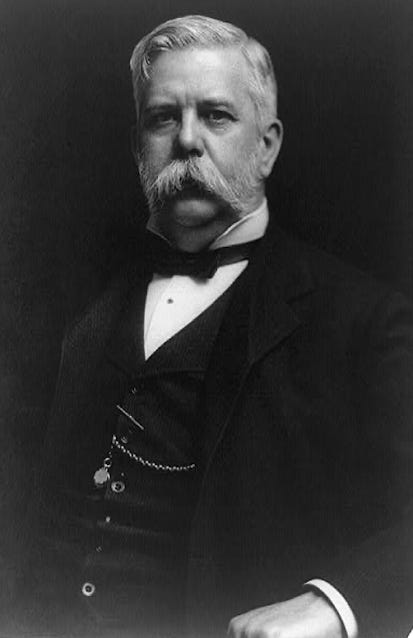James Blaine's Dupont Circle Mansion: A Short Tenure
The grand red brick at 2000 Massachusetts Avenue was designed by architect John Fraser and built in 1881 for James Gillespie Blaine, one of the most prominent and powerful politicians of the nineteenth century. While the house still bears his name to this day, Blaine occupied it for less than two years.
James Gillespie Blaine was born in West Brownsville, Pennsylvania, in 1830 and graduated from Washington and Jefferson College in 1847 at the age of seventeen. After a brief teaching career in Kentucky and Philadelphia, Blaine moved to Augusta, Maine, in 1854.
While in Maine, Blaine became one of the founders of the Republican Party serving as editor of the Kennebec Journal and later the Portland Advertiser. His home in Augusta, Maine is still known as the Blaine Mansion and serves as the official residence of the Governor of Maine.
Blaine won a seat in the House of Representatives in 1862 and quickly emerged as a rising star in the Republican Party. A journalist by trade, Blaine was an enthusiastic debater and outspoken politician and became known by various epitaphs, including "The Continental Liar from the State of Maine," "Slippery Jim," and "The Magnetic Man." Blaine became Speaker of the House for three terms (1869-1874). During his time as Speaker, he purchased a large residence at 821 Fifteenth Street, NW.
Blaine was elected to the Senate in 1876 and that same year sought his party's nomination for President. But the “Mulligan Letters” scandal, which implicated Blaine in accepting bribes from the Union Pacific Railroad, cost him the nomination and almost cost Garfield the 1880 presidential election.
During the 1880 presidential election, Blaine again sought the Republican nomination, which ultimately went to Garfield. After Garfield won the general election, he offered Blaine the position of secretary of state and Blaine resigned his Senate seat in 1881 to take the position. Illinois congressman Robert Roberts Hitt, whose widow would eventually build a residence on Dupont Circle, served as Assistant Secretary of State under Blaine.
Probably feeling quite secure in his new position as secretary of state, Blaine commissioned Philadelphia architect John Fraser to design the massive red brick, Queen Anne/Second Empire-style house at 2000 Massachusetts Avenue opposite Stewart’s Castle (1873). The house was constructed at a cost of $48,000. That same year, Fraser designed another home at 1800 Massachusetts Avenue for Senator Charles Van Wyck, but was built at the significantly lesser cost of $19,000.
In 1881, ground was broken for Blaine’s new mansion on Massachusetts Avenue one block to the west of Dupont Circle and on the site of the former Hopkins Brickyard. When the Blaine house was built, its only neighbors were the Galt mansion, Stewart's Castle (both directly on Dupont Circle), and Curtis Hillyer's mansion (now the Cosmos Club) on the very western edge of the neighborhood on Massachusetts Avenue. But only a few years later, the area boasted an increasing number of palatial mansions, and with the 1886 westward extension of Massachusetts Avenue towards what would become Sheridan Circle, Dupont Circle was in the process of becoming the most exclusive neighborhood in the city— a reputation it retained until the beginning of the First World War.
Ground for Blaine’s new house was broken in June 1881, and Blaine moved in the next winter, but he did not live there long. Blaine’s fortunes had changed suddenly in September 1881. Strolling through the Sixth Street B&O Train Station with President Garfield, Garfield was struck by an assassin’s bullet and later died. Blaine only lasted three months in the Chester Arthur administration.

By 1883, Blaine had rented out the Massachusetts Avenue house. He initially rented the house at 22 Jackson Place on Lafayette Square while renovating the Seward mansion (as known as Rodgers House) across Lafayette Square at 17 Madison Place, NW., now the site of the Court of Claims Building. The twenty-room house was built by Commodore John Rogers in 1831. During the Civil War, it became home to William H. Seward, who served under Lincoln and Johnson as secretary of state. It was there that an attempt was made on Seward’s life by the Lincoln assassins. After the Civil War, the house was used as a government document repository. Blaine’s interest in the Seward house may have been the result of the need to scale back on his lavish life style after Garfield’s assassination, the fact that it had been occupied by another famous Republican secretary of state, or that it was in striking distance of the White House and the sight of Blaine’s political ambitions.
The most prominent tenants of the house at 2000 Massachusetts Avenue were Levi and Mary Leiter of Chicago, who rented the house when they first moved to Washington in 1883 and remained there until their own grand mansion at 1500 New Hampshire Avenue was completed in 1891.

Blaine finally won the Republican Party nomination for President in 1884, but lost to Grover Cleveland in a very close and bitterly contested election. After the election, Blaine was absent from Washington political life, travelling and lecturing, but returned in 1889 to serve once again as secretary of state under Benjamin Harrison, returning to live in the Seward house on Lafayette Square. Blaine’s health had been continuously deteriorating since his return to Washington and he died in January 1893 in his home.
In 1901, Blaine’s widow Harriet sold the Massachusetts Avenue house to George Westinghouse, the inventor of the railway air brake for $190,000. Westinghouse owned the house until 1914 and entertained in it lavishly.







